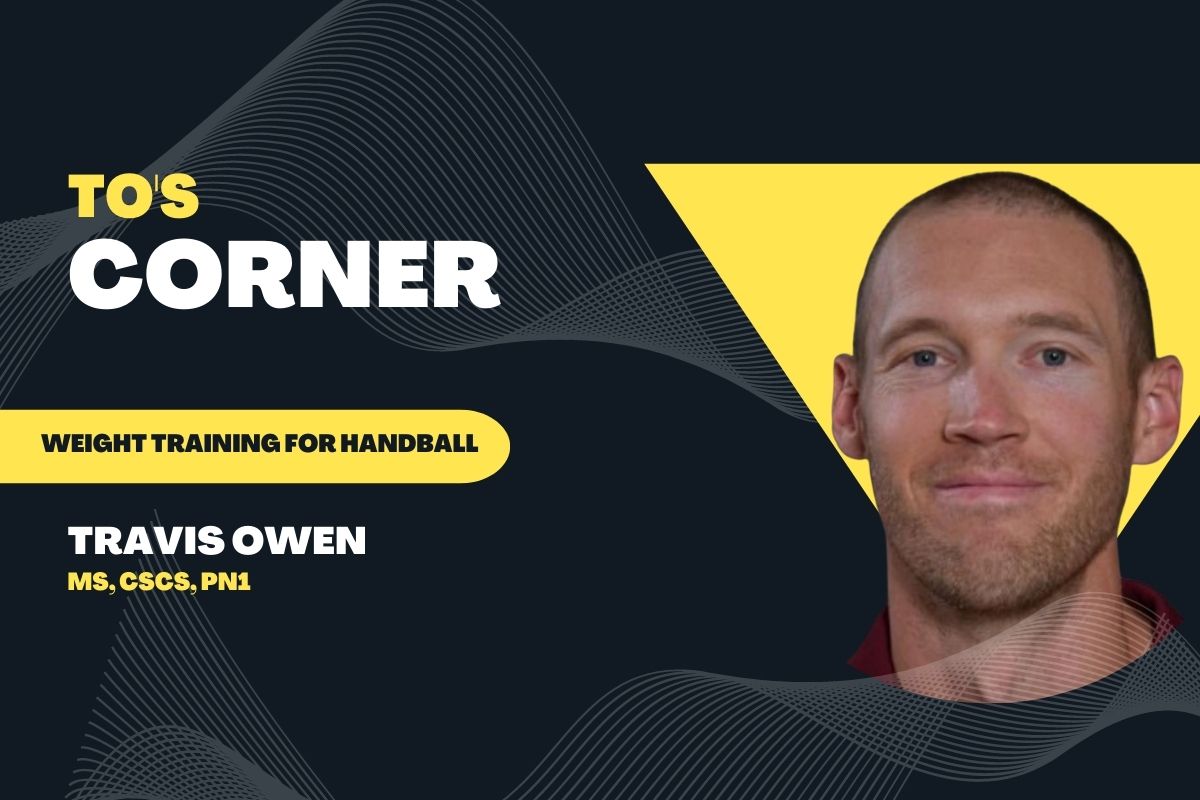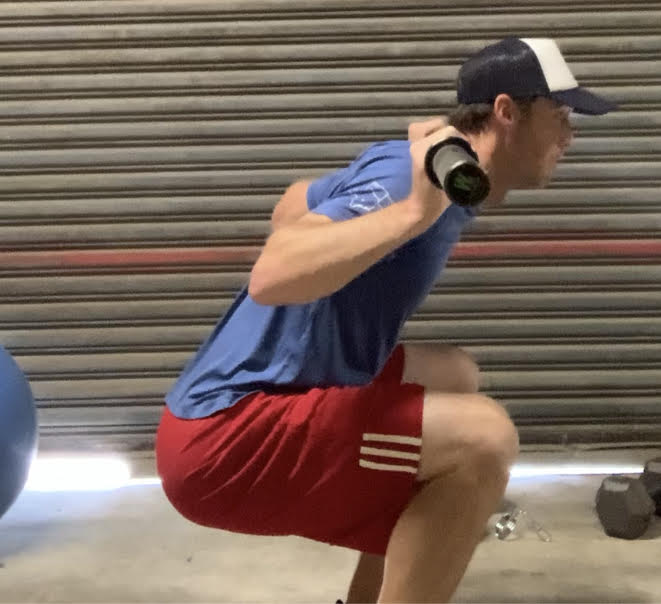Weight Training For Handball: The Squat and How Low Should You Go? (Part 1)
By Travis Owen, MS, CSCS, PN1
This article is Part 1 of a two-part series covering The Squat pattern and its significance when it comes to handball training.
Anyone who has played high school or college sports is probably used to hearing “lower!” being yelled throughout the weight room while squatting. However, going as low as possible while under load, depending on your mobility, isn’t always necessarily the best move. But isn’t getting low good for mobility? Yes, so let’s dive into the pros/cons and reasoning on squatting low, and how low you should go. Part 2 will then cover different types of squatting movements and the benefits/takeaways involved in each.
First, if you’re not doing some sort of resistance training/weight lifting for your game (and not just your game, but your health), there are countless studies done on force production, bone health, ligament health, etc. on the benefits of resistance training. Want more power? More balance and stability? Well, weight training will improve all of those things. There’s a reason basically every professional athlete does some form of weight training. Of course, this is not to say we want to lift like bodybuilders, thus it’s very important to focus on, and maintain our mobility. And one of the cornerstones that you’ll see in any good weight training program for maintaining mobility and strength, is the squat.
Benefits of Squatting
Besides the obvious benefits of leg strength, squatting with at least enough weight to present a challenge will also give the body some good axial load. This “stress” on the body leads to adaptations including improved bone strength, more efficient CNS (Central Nervous System) firing, and improving the body’s hormonal profile (e.g. improved growth hormone and testosterone response), which can help everything from strength, to recovery.
Next, a solid squat pattern obviously requires a good amount of hip mobility. This isn’t just important for strengthening the entire hip joint when we squat or perform other movements, but sufficient hip mobility also helps with quickness, power production, injury prevention, and simply efficient overall movement/athleticism. Cutting, planting, moving laterally, forward, backward, all depend on having requisite hip mobility, and training a good squat pattern can and will help with all of the above when done properly.
So How Low Should We Go?
Now that we’ve established how effective the squat can be in training, let’s talk about form. Basically, the answer here is like any type of exercise that requires some mobility. We want to push our range of motion as far as possible without losing form! What does this mean for squatting then? Besides the basics of having an upright torso, pushing our hips back (so that our knees aren’t moving far forward instead), one seemingly minor, but nonetheless important issue that many people still run into is slight lower back flexion upon nearing end range-of-motion.
This happens when we go “too low” and round or tuck-under at the lower back/lumbar area.
Tucking Under- Not what we want
Low Squat w/ Good Neutral Lumbar Spine
Unfortunately, in my experience this isn’t always something everyone feels. So, if you can’t feel whether or not you’re tucking under versus maintaining a good neutral spine/natural arch in the back, use a mirror or your camera/phone and make sure you DO go low- however, stop just before your lower back starts to round. Now, the rounded lower back isn’t a problem in itself of course. It’s a natural movement and necessary to have that flexibility when it comes to basic function; it’s just not something we want to happen when under load.
Causes of the Tuck Under
While there can be others, the most significant causes of tucking under if you’re struggling to get low on your squat tend to be:
1) Insufficient hip mobility (usually in the form of tight hip flexors), or
2) Insufficient core stability (usually anterior & deep core)
For improving hip mobility to help the squat pattern, I’m a big fan of exercises that both stretch and lengthen/strengthen the hip flexors, particularly prior to performing squats. “Long-stride” movements can be an excellent choice because of the reciprocal inhibition involved, firing the glutes which help take some tension away from the hip flexors.
Long-Stride Dumbbell Reverse Lunges HERE
Long-Stride Lunge w/ Elbow to In-Step & OH Reach HERE
Back Foot Elevated Rectus Femoris Stretch HERE
For the anterior core, this could be an entirely separate post, but to keep it succinct, I much prefer core stability exercises that keep our torso’s posture in a straight line. Meaning, avoiding sit-ups and crunches, and substituting planks and variations instead.
Front Planks HERE
Front Planks w/ Glute Activation HERE
Strengthening the external obliques with side planks is also a great exercise for handball players, since the obliques attach to the hip and are directly involved in assisting with rotation.
Side Bridge HERE
Side Planks
Summary & Squatting
Finally, to wrap up this article and move onto Part 2, because of the general shoulder adaptations and higher likelihood of instability in parts of the shoulder that comes with playing handball, back squats can sometimes pose a crankiness to the shoulder due to a higher amount of external shoulder rotation while gripping the bar. That grip and stability is imperative for the back squat as we anchor the bar onto our upper back and engage the lats, so next week in Part 2 I’ll cover some good alternatives to the back squat and tradeoffs to consider.
 Travis Owen is the founder of his training service Travis Owen Performance (T.O. Performance) and has been involved with handball since picking it up in college in 2005. CSCS Certified through the National Strength & Conditioning Association and having earned his Master’s degree in 2011, Travis has been training individuals of all types for over 10 years. With an initial focus on softball & baseball athletes, Travis is starting to expand his reach to handball players and would like to elevate the game by providing articles and videos, as well as program design or training for anyone interested.
Travis Owen is the founder of his training service Travis Owen Performance (T.O. Performance) and has been involved with handball since picking it up in college in 2005. CSCS Certified through the National Strength & Conditioning Association and having earned his Master’s degree in 2011, Travis has been training individuals of all types for over 10 years. With an initial focus on softball & baseball athletes, Travis is starting to expand his reach to handball players and would like to elevate the game by providing articles and videos, as well as program design or training for anyone interested.
If you are looking for exercise programs or have any questions, contact Travis by email at owenperformanceTO@gmail.com, or visit travisowenperformance.com












